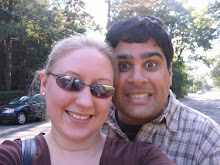Humbug
So the BSP loader works and does all it needs to do. Now my raytracing needs to be fixed. I got into a loop for about 4 days of trying to tweak the same block of code and simply never taking enough time to develop a proper algorhitm on paper. This tweak addiction just leads to many horrid results. I finally rewrote my todo list to have a note at the top saying that I wasn't allowed to try fixing raycasting again until at least 2 days. The time off will help A. calm me down and B. give me a fresh perspective on the problem. I've resolved to not attempt coding until a proper algorthim can be developed (at least one that is aware of as many potential problems possible).
Unfortunatly, I've found that the Solid-Leaf BSP does not work well with oriented bounding volumes. From the earlier tests, I've found my OBBs can't go around corners properly until push far enough past. I may be able to resolve this when I approach the raytracing problem on Friday. At this point, I think I will need to find a way to build a spatial partioning structure that will sort my static geometry without breaking it down to segments. That way I can keep using the SAT tests with chunks of geometry. This will probably be a OBB tree of some kind that will keep encapsulating my static geometry. Anyhoos, more on this friday! For now....finals!
